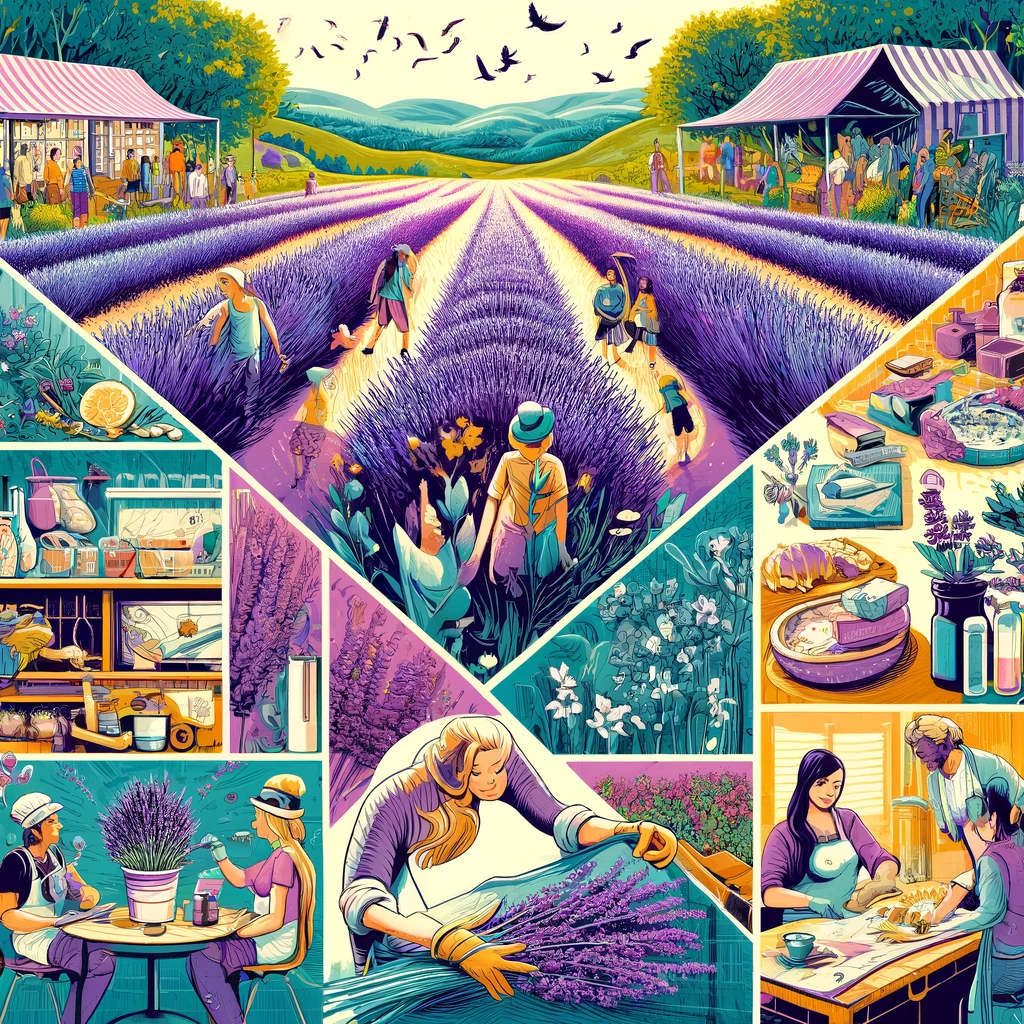
Lavender’s Role in Contemporary Society
Lavender, with its enchanting fragrance and myriad benefits, continues to weave its magic into the tapestry of modern culture. Beyond its traditional uses in aromatherapy and medicine, lavender has experienced a cultural revival, finding new relevance in festivals, culinary arts, and community-driven initiatives. This 2000-word article explores the enduring appeal of lavender in contemporary cultural practices and its impact on education and community involvement.
Lavender in Contemporary Culture
Festivals Celebrating Lavender
Across the globe, lavender festivals celebrate this beloved herb, drawing visitors to experience the beauty and benefits of lavender firsthand. These festivals often occur in regions known for extensive lavender farming, such as Provence in France, Sequim in Washington, USA, and the highlands of Tasmania, Australia. During these events, fields awash with purple blooms become the backdrop for a variety of activities including guided tours, picking events, and craft workshops where participants can learn to make lavender wreaths, soaps, and essential oils.
These festivals not only celebrate the aesthetic and sensory pleasures of lavender but also educate the public about its ecological and agricultural significance. They often feature lectures and demonstrations by botanists and herbalists who discuss the cultivation, properties, and uses of lavender, emphasizing its role in sustainable agriculture and natural wellness.
Culinary Uses
In the culinary world, lavender has found a niche as a versatile and aromatic ingredient. Its flowers and leaves are used to add a unique flavor to dishes such as roasted meats, baked goods, and desserts. Lavender-infused honey, teas, and ice creams are particularly popular, offering a subtle floral note that elevates the gastronomic experience.
Moreover, lavender is making its way into mixology, featured in cocktails and spirits that captivate sophisticated palates. Restaurants and bars experiment with lavender to create innovative drinks that are both refreshing and relaxing. This culinary exploration has introduced lavender to a broader audience, integrating it into modern dining experiences.
Role in Social Ceremonies
Lavender also plays a significant role in social ceremonies, particularly weddings and celebrations of life. Its flowers are often chosen for bridal bouquets and decorations for their beauty and symbolism of purity, silence, and devotion. Lavender is also used in sachets and favors, providing guests with a fragrant memento of the occasion.
In memorial services, lavender is valued for its calming scent and its traditional association with love and remembrance. It is used in floral arrangements and condolence gifts, providing comfort and a sense of peace to those grieving.
Educational Aspects and Community Involvement
Educational Programs
Educational institutions and nonprofit organizations are increasingly incorporating lavender into their programs, recognizing its benefits for learning and well-being. Schools, from elementary to universities, use garden projects featuring lavender to teach students about botany, ecology, and sustainable gardening practices. These programs often include sensory gardens where lavender is used to stimulate learning through smell and touch, helping to enhance cognitive functions and reduce stress among students.
Community Gardens and Urban Agriculture
Lavender is a popular choice in community gardens and urban agricultural initiatives due to its low maintenance and drought-resistant nature. These community projects often focus on greening urban spaces, improving air quality, and providing residents with access to fresh herbs.
Community involvement in lavender cultivation fosters a sense of ownership and pride among participants, who share the responsibilities of tending the gardens. These spaces serve as communal hubs where people gather to learn, socialize, and support local ecosystems. Workshops on how to use lavender, from crafting personal care products to cooking classes, further engage the community, enhancing social cohesion and promoting sustainable living.
Conclusion
The cultural revival of lavender in modern practices reflects a broader trend towards naturalism and sustainability in contemporary society. From its prominence in festivals and gastronomy to its role in education and community development, lavender continues to enrich our lives, bridging the gap between tradition and modernity. This enduring herb not only captivates our senses but also encourages a deeper connection to the environment and to each other, playing a vital role in cultural and community activities across the globe.
Global Herbalist IT GPT
A botanical expert on herbs, their stories, and properties.
